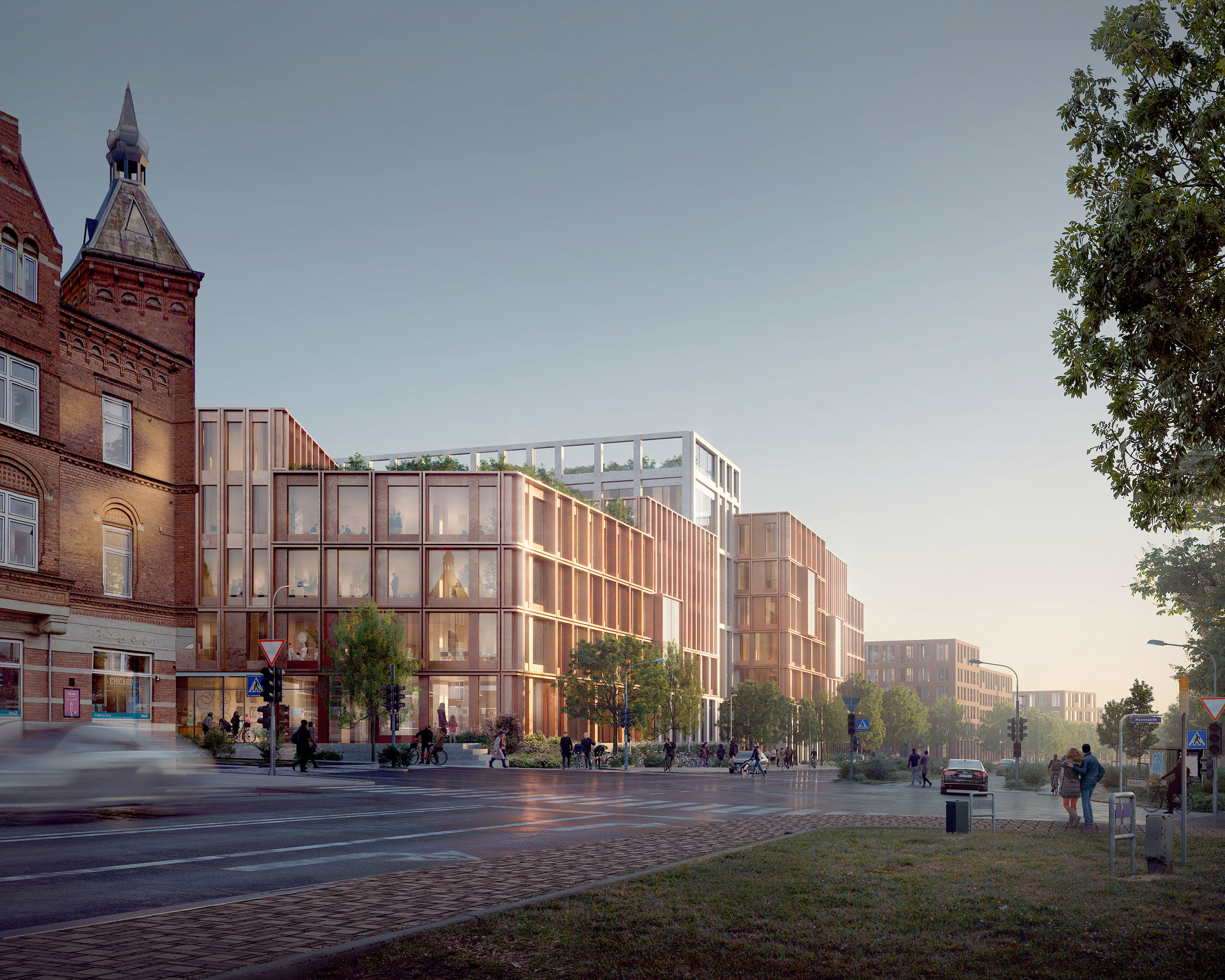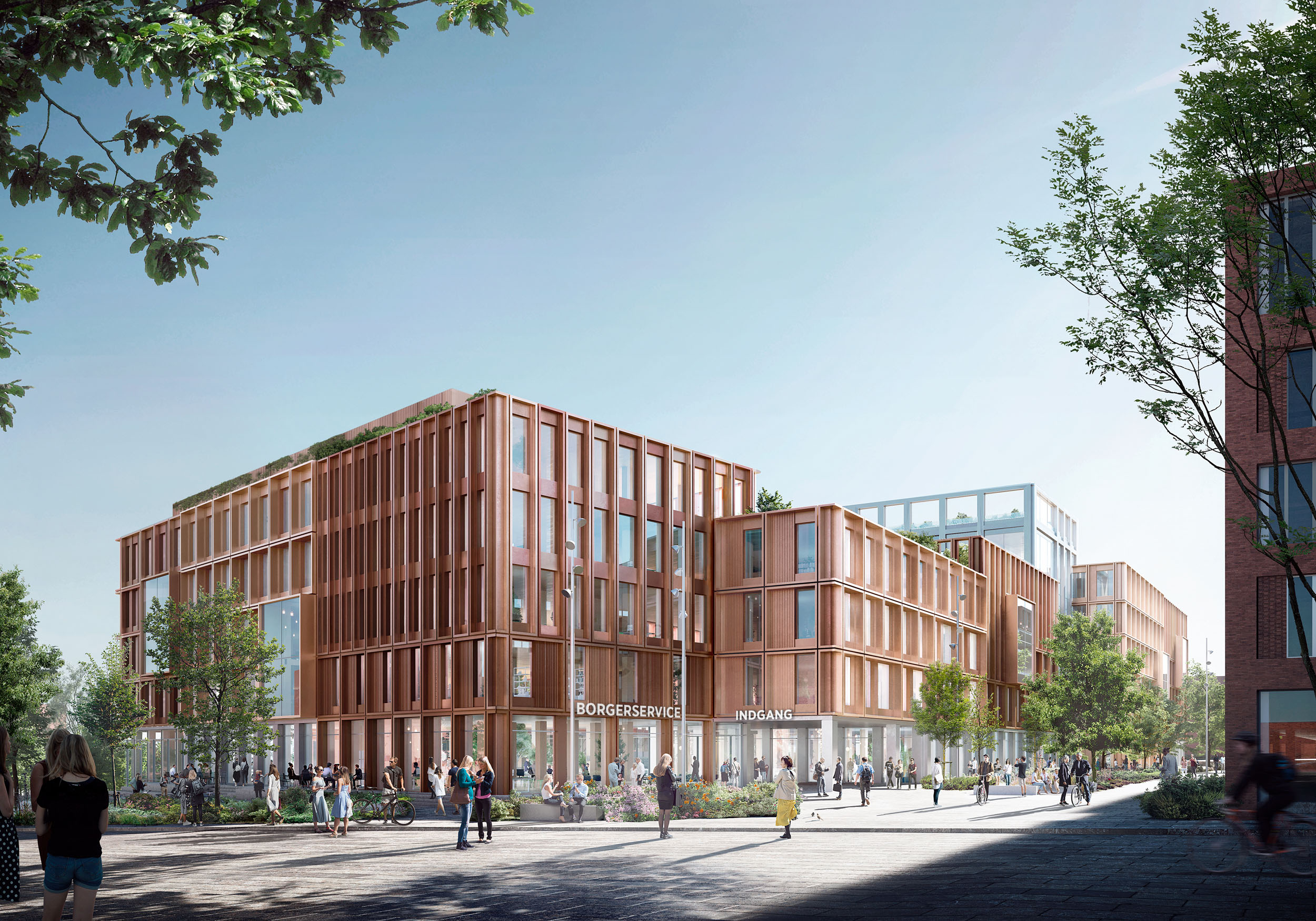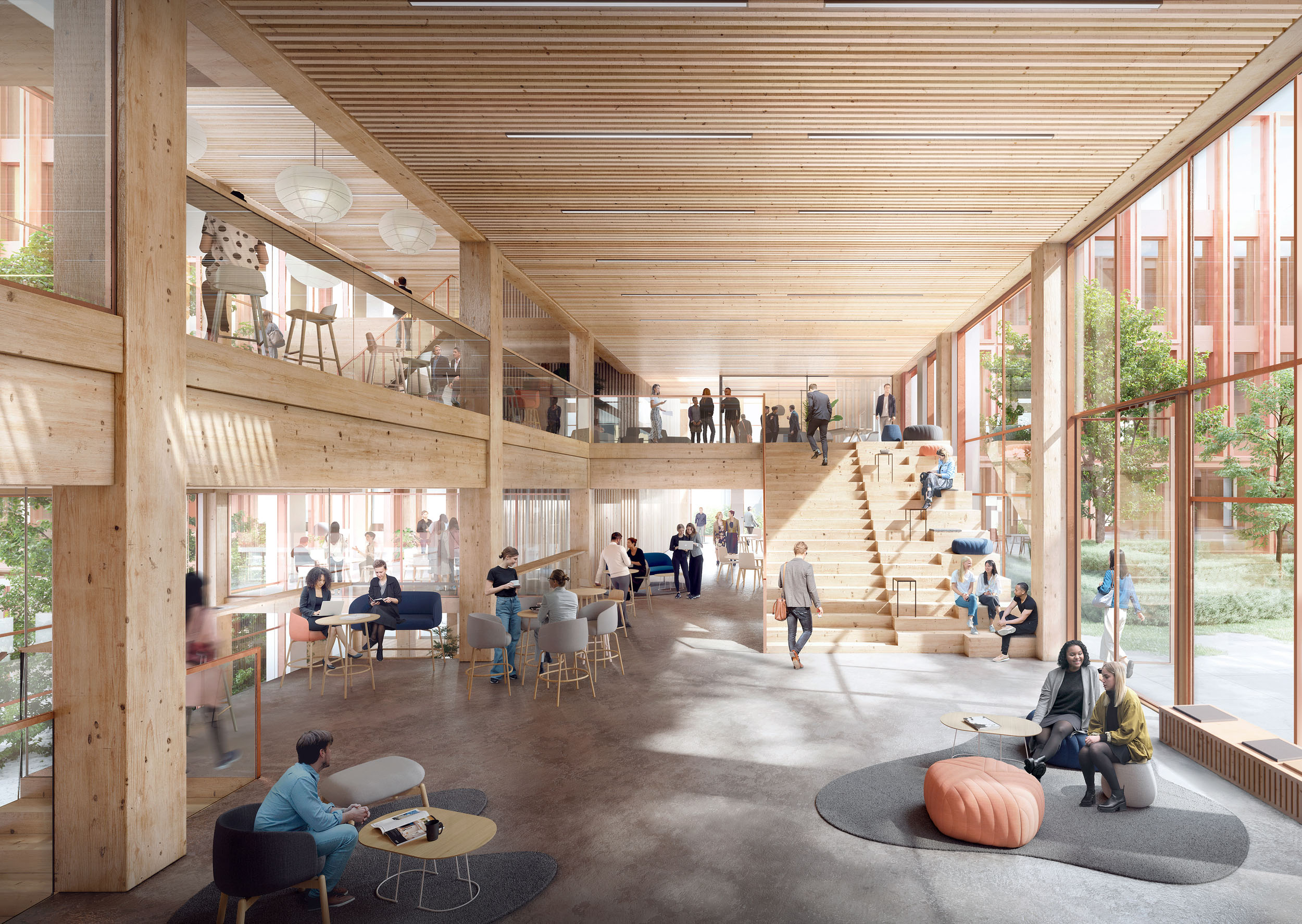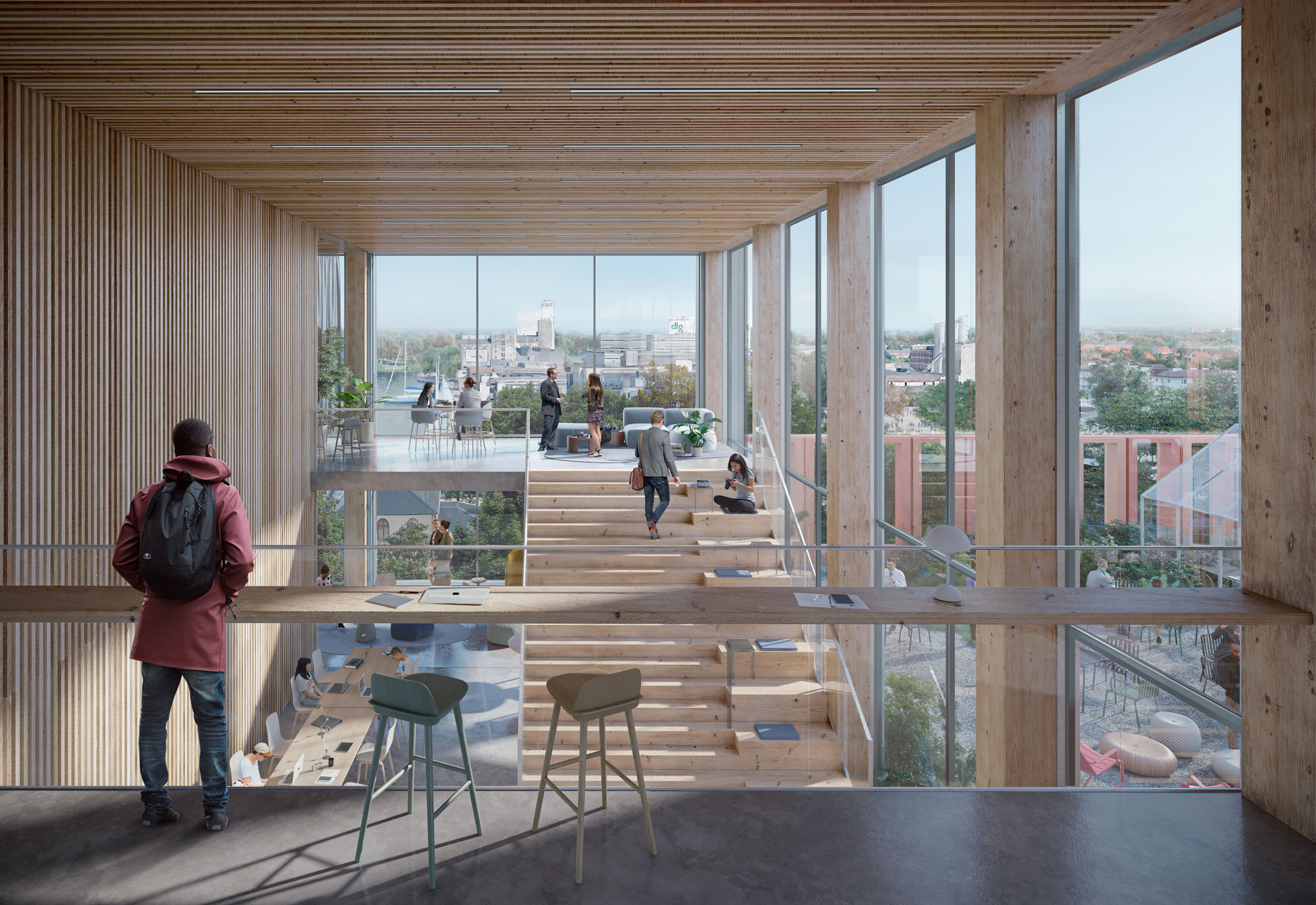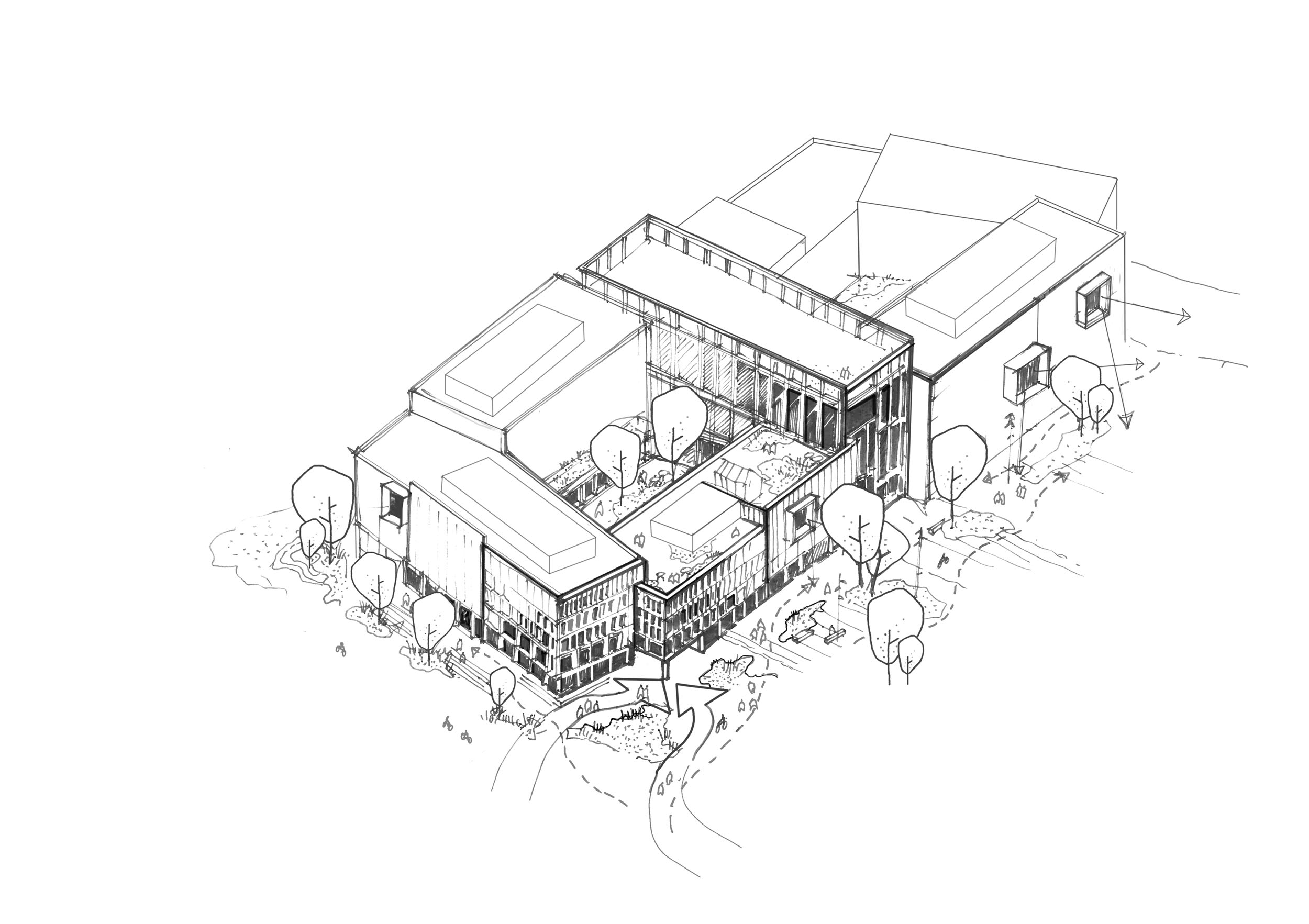2843-CFM-DK-2021
Client: The Danish Building and Property Agency
Status: Competition (2021)
Clasification: 1 prize
Location: Odense, Denmark
Coordinates: 55.4054320, 10.3834810
Climate: Continental, Oceanic / maritime
Material: Wood
Environment: Urban
Visualizer: Studio Aesthetica
Scale: 36.500 ㎡ Large
Types: Administrative center, Institutional
Wins competition in sustainable timber construction
Based on the last and best offers from the three prequalified turnkey contractors, the Danish Building and Property Agency (BYGST) awarded the contract to NCC. Among other things, NCC’s offer describes good solutions for functionality and flexibility with respect for the interior design as well as for the technical installations which also benefit indoor climate and work environment. At the same time, the architecture considers the visions for the area, for example by inviting the public and future employees in the building to use the outdoor areas.
The tender material for the project required that the load-bearing constructions must be built in timber.
All three offers were of a high quality and complied with the requirement of using timber in the load-bearing constructions rather than concrete or steel. We are, of course, pleased that the industry’s challenge regarding sustainability iscapable of being realized along with our constant requirements for a modern, flexible workplace. We look forward to continuing the project in cooperation with NCC’s team and Odense Municipality, says Signe Primdal Lyndrup, COO of the Building and Property Agency.
Pioneer project in timber constructions in Denmark
With its 31,000 m2 of solid timber constructions, the project is a flagship project in sustainable office buildings of this size in Denmark. Visible columns in solid timber and partially visible CLT floor constructions are used as load-bearing and recurring construction materials. This contributes to a CO2 reduce of 5,400 tons over a 50-year life span as well as a sensuous architecture that will have a positive effect on the atmosphere in the building.
The façades are made of recycled aluminum as a coherent outer composition in red-brown nuances matching the surrounding buildings’ brick façades and thereby creating an honest, uncomplicated and refined expression.
We are both proud, humble and happy to receive the information that we, together with MOE and NCC, have won the competition for the 31,000 m2 office building for BYGST in Odense. A solid-timber construction of this size will not only be defining for C.F. Møller Architects in relation to Danish projects in solid timber – it will also define public building projects in Denmark where, in this case, BYGST is taking the lead by demanding CO2-friendly flexible office buildings in solid timber. We look forward to be a part of this journey, says Lone Wiggers, partner and architect at C.F. Møller. Møller Architects.
The address of the future government office hub will be 35 Lerchesgade in Odense. The total area will be approx. 31,000 m2 excluding the basement and has modern office workspaces for 1,600 employees. The spatial construction of the building sets a robust and flexible framework for variation between office workspaces and social meeting places. This means that the users may expand or reduce their varied facilities as required. In its basic structure the building consists of two staggered ‘C’ formed office wings facing east and west. The office wings extend from three to six floors and meet in a seven-storey joint building wing.
The seven-storey joint building wing houses the main part of the entire building’s meeting facilities in order to achieve an effective support of maximum knowledge sharing and inter-disciplinary communication between employees. The ground floor contains meeting center, canteen and public front-office functions and supports the urban life with public access to the inner garden space of the building, and niches and space for recreation along the building’s outer façade. The building is highest towards the middle and recedes in steps towards the neighboring buildings. Thereby the building fits into its surroundings and it also ensures plenty of daylight and a good indoor climate. Roof terraces and raised courtyard gardens, as well as green and public courtyards provide recreational oases and places for breaks and outdoor meetings – and moreover, it increases the biodiversity in the district.
